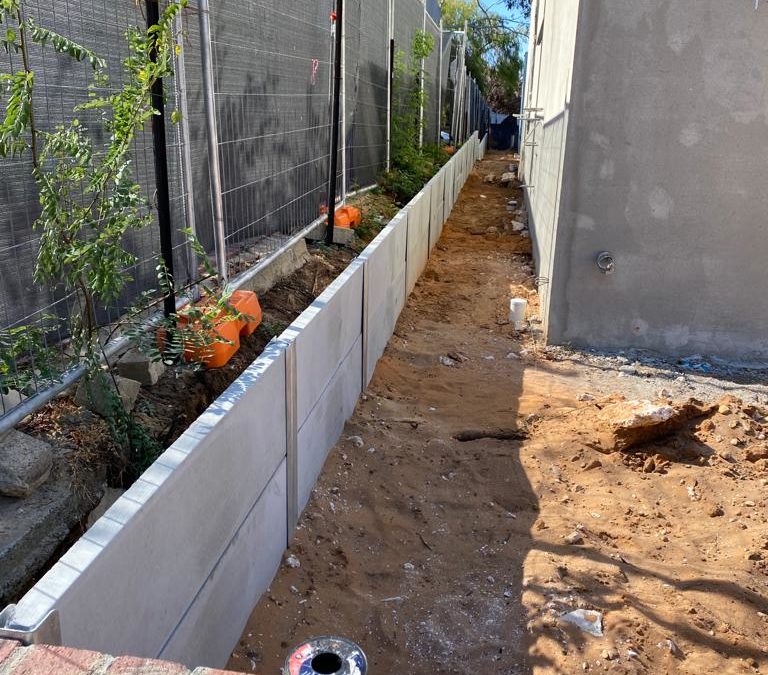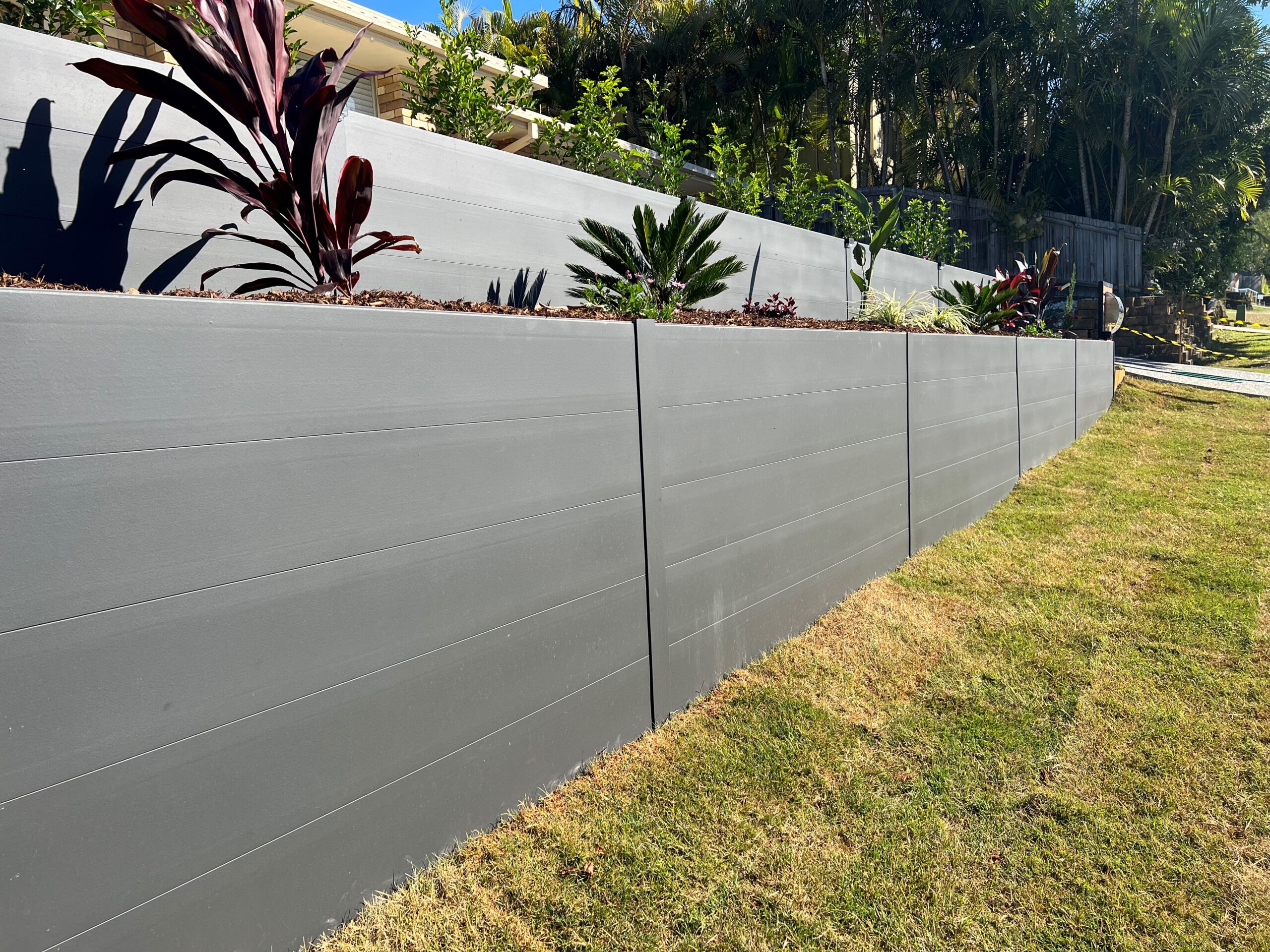Enhancing Residential Property Security: The Function of Retaining Walls in Dirt Retention and Erosion Control
In the realm of residential or commercial property monitoring, keeping security and avoiding disintegration are critical problems for homeowner and developers alike. Keeping wall surfaces stand as quiet guardians, playing a critical duty in soil retention and disintegration control. Their importance prolongs past simple structural assistance, influencing the total integrity and long life of a building. By checking out the subtleties of various types, design factors to consider, building and construction strategies, and upkeep ideas linked with retaining walls, a much deeper understanding of their critical role in improving building security arises. The detailed dance between engineering prowess and environmental harmony introduces an engaging story that underscores the vital nature of retaining wall surfaces in modern land management.
Significance of Retaining Walls in Security
The importance of keeping walls in guaranteeing stability within landscapes can not be overstated. Preserving walls play a vital role in keeping back dirt, avoiding erosion, and creating level surfaces in sloped areas. By giving structural assistance, preserving walls help to redistribute lateral stress brought on by dirt, stopping landslides and slippage. Along with enhancing the visual appeal of a residential property, retaining wall surfaces add to the overall security and performance of exterior rooms.
Keeping walls are especially important in sloping or uneven terrains where dirt erosion is a common occurrence. Without appropriate support, dirt disintegration can lead to the degradation of landscapes, endangering the integrity of structures and positioning threats to inhabitants. Keeping walls serve as obstacles, supporting the dirt and avoiding it from shifting downhill during hefty rains or other environmental stress factors.
In addition, keeping walls supply lasting benefits by lowering upkeep expenses connected with dirt erosion and land instability. By buying well-designed maintaining wall surfaces, residential property owners can ensure the durability and sustainability of their landscapes while promoting a secure and visually enticing setting.

Kinds of Retaining Walls for Erosion Control
Gravity retaining wall surfaces are sturdy frameworks that rely on their weight to withstand the stress of the soil behind them. Cantilever maintaining walls, on the other hand, are designed with a thicker base and utilize a lever arm to withstand the soil pressure.
For taller walls or where area is a restriction, secured retaining wall surfaces are typically employed. These wall surfaces utilize cable televisions or strips that are secured into the dirt or rock behind the wall to provide extra assistance. An additional type, the sheet stack keeping wall surface, is suitable for areas with soft dirt. Retaining Walls Sunshine Coast. These walls include interlocking sheets that are driven into the ground to develop an obstacle versus dirt disintegration. When choosing the proper type of maintaining wall surface for disintegration control, variables such as soil structure, wall surface height, and website conditions need to be thoroughly thought about to make sure durable security and effectiveness.
Layout Factors To Consider for Soil Retention
The height and place of the maintaining wall are important elements that affect the overall design. Designers should also think about the pressure put in by the kept soil and potential side tons to ensure the structure's security over time.
Additionally, the product selection for the maintaining wall surface is essential in improving long life and performance. Concrete, timber, gabion baskets, and natural rock are usual products used in preserving wall surface construction, each with its special benefits and considerations. Proper drain mechanisms, such as weep openings and French drains, should be integrated into the style to protect against water build-up behind the wall surface, which can bring about architectural failure and erosion.
Building And Construction Methods for Maintaining Walls
When executing style considerations for efficient dirt retention, the building and construction methods for retaining wall surfaces play a vital duty in guaranteeing structural honesty and long-term security. The success of a keeping wall surface greatly depends upon the building and construction approaches used. One common method is the gravity wall surface, which counts on the weight and mass of the wall surface itself to resist the stress of the retained dirt. Gravity walls Full Report appropriate for reduced to medium elevations and are relatively simple to construct. Retaining Walls Sunshine Coast.
An additional widely utilized building technique is the cantilevered wall, which uses a concrete slab foundation that expands in reverse right into the retained dirt. This layout provides added stability and appropriates for medium to high preserving walls. For taller structures, reinforced soil strategies such as using geogrids or soil nails can be used to improve the wall surface's stamina and security.

Maintenance Tips for Building Stability
To make sure long-term home security, normal upkeep methods are essential for protecting the stability of preventing and keeping walls erosion issues. Checking keeping wall surfaces periodically is vital to recognize any type of indicators of damages, such as cracks, bulging, or leaning. Any problems ought to be dealt with without delay to protect against more deterioration. Cleaning up the surface area of the keeping walls can additionally assist keep their structural integrity by removing dust, particles, and greenery that could damage the wall over time (Retaining Walls Sunshine Coast).
Along with visual evaluations and cleansing, it is essential to inspect the drainage systems related to the retaining walls. Making sure that drains pipes are free from blockages and working correctly can avoid water buildup behind the walls, which can bring about important site pressure and prospective failing. Effectively operating water drainage systems are vital for taking care of water circulation and lowering the danger of disintegration.
Regularly keeping and checking retaining walls according to these suggestions can prolong their life-span and contribute to the overall stability of the home.
Final Thought
In final thought, keeping walls play an important function in enhancing residential or commercial property security by avoiding dirt erosion and preserving dirt in place. Regular maintenance of retaining wall surfaces is important to ensure long-lasting stability and security versus erosion.
For taller wall surfaces or where area is a restriction, anchored maintaining walls are typically utilized. These walls use cords or strips that are secured right into the soil or rock behind the wall surface to supply additional assistance. When choosing the appropriate type of maintaining wall for disintegration control, aspects such as soil make-up, wall elevation, and site problems should be very carefully taken into consideration to ensure long-lasting stability and efficiency.
One usual strategy is the gravity wall, which counts on the weight and mass of the wall itself to resist the stress of the maintained dirt. Cleansing the surface of the preserving wall surfaces can additionally help keep their architectural stability by eliminating dirt, debris, and greenery that could site compromise the wall surface over time.